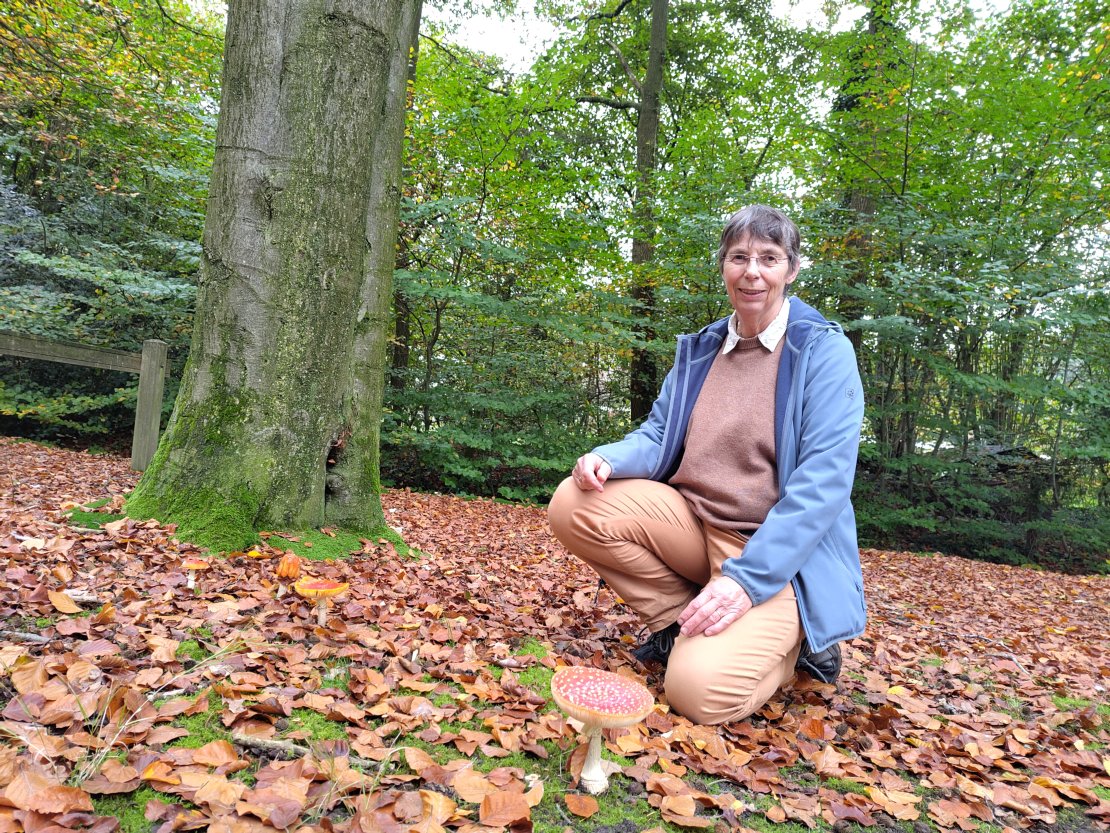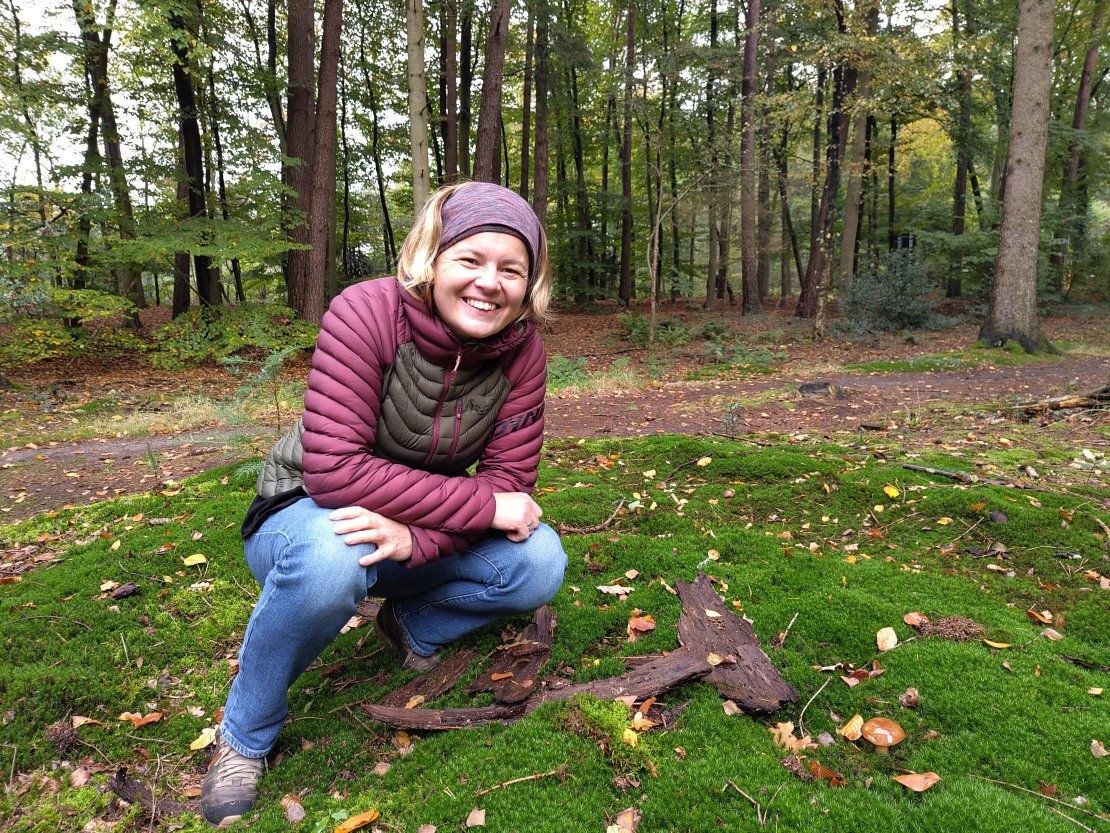For most plants, the blooming season is over by autumn. Not so for mushrooms: anyone who walked or cycled across campus last autumn surely noticed them. In a dazzling variety of shapes and colours, mushrooms appeared in large numbers on and around trees (or stumps), or nestled in the grass. The abundance of rain in the past year resulted in a significant increase in mushrooms compared to previous, drier years. But what exactly are mushrooms, and what role do they play in nature?
|
|
What are mushrooms?
Mushrooms are the fruiting bodies of fungi that usually grow underground or within wood. By spreading spores, they ensure the continuation of their species. For many, mushrooms carry a magical allure they appear suddenly, are admired, sometimes consumed, and often photographed due to their incredible diversity in form. The fungi that produce these mushrooms play a vital, often unseen, role in ecosystems. They help forests remain healthy and balanced by collaborating with trees, breaking down dead organic matter into new nutrients, and assisting in the removal of weakened trees, creating space for younger ones to grow.
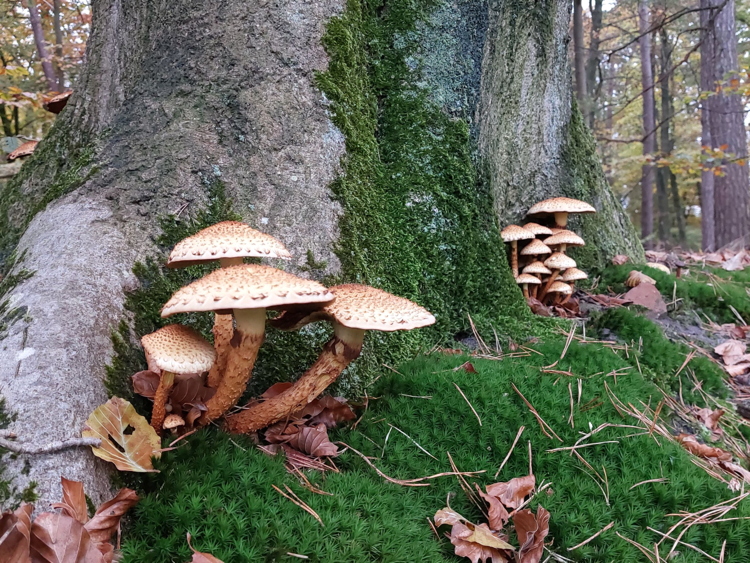
Parasitic Scalycap (Pholiota squarrosa) at the base of a living beech tree. Photo: Marian and Bert
Mycophilia (love) and mycophobia (fear) of fungi
In Eastern Europe, eating mushrooms picked from the forest is deeply ingrained in the culture. Mushrooms also play a crucial role in the ecosystem, and we encourage everyone to simply enjoy observing them.
In many countries, knowledge about mushrooms has been lost because foraging is no longer a necessity. Without this need, the tradition of passing down nature knowledge from generation to generation has faded. Anna Kario learned about mushrooms from her grandmother Janina, with whom she ventured into the forest every autumn as a child. Together, they searched for these mysterious and fascinating fungi. It was always a game: who could find the most?
The search itself was a challenge. Mushrooms are masters of disguise, blending seamlessly with the autumn colours of the forest floor: yellow and gray grey leaves, low sunlight, and often rainy weather. Other mushroom pickers also added competition. Anna’s grandmother had the advantage of experience, knowing the forest inside out and which trees (mycorrhiza) hosted specific types. Anna, despite her fresh eyes, often came second. As a child, losing was hard, but later she realized how much knowledge she gained and how precious their time together was.
In Poland, mushroom picking is almost a national sport and is widely permitted for personal use. Mushrooms are also integral to Polish cuisine. Someone once remarked that Polish cooking can be defined by three elements: smoke, acidity, and the forest. And the forest, of course, provides the mushrooms.
Mushrooms and fungi are mysterious and versatile organisms. They inspire not only scientists but also creatives. Researchers are exploring their use as biodegradable materials, and in 1928, Alexander Fleming’s discovery of penicillin—derived from a fungus—led to the development of the first antibiotic. In popular culture, mushrooms play significant roles, sparking imaginative stories such as Star Trek Discovery and A Series of Unfortunate Events.
How do mushrooms support the ecosystem?
Fungi rely on other organisms for their sustenance, and they can be categorized, roughly, into three groups based on how they acquire their nutrients:
- Mycorrhizal fungi form mutually beneficial partnerships with host plants.
- Parasitic fungi live at the expense of a host organism, often weakening or killing it.
- Saprotrophic fungi feed on dead organic material, recycling it into nutrients usable by other organisms.
Mycorrhizal fungi partner with trees, connecting to their roots to exchange resources. The fungi provide the tree with water and minerals, while receiving sugars in return. This symbiosis benefits both. A well-known example is the Fly Agaric (Amanita muscaria), which partners with birch, oak, and pine trees. On campus, other species of Amanitas, including the Blusher (A. rubescens), Panther Cap (A. pantherina), and the deadly Death Cap (A. phalloides), are also found. Additionally, members of the bolete, milkcap, and russula families, which also collaborate with trees, are common here.

Deadly poisonous Death Cap (Amanita phalloides) growing under oaks. Photo: Marian and Bert
Aggressive species on campus
Across the country, older trees—particularly oaks and beeches—are struggling due to recent years of severe drought and soil acidification. Unfortunately, the campus has not been spared. Many weakened trees have already been felled as a precaution, and others may soon follow. These vulnerable trees are easy targets for parasitic fungi, such as Hen of the Woods (Grifola frondosa), Giant Polypore (Meripilus giganteus), and Scalycap (Pholiota squarrosa).
Not all parasitic fungi are equally aggressive, however. For instance, a Resinous Polypore (Ganoderma resinaceum) has been growing for years at the base of an oak near a student residence. Despite the formation of a cavity in the tree, it still appears healthy.
Other parasitic fungi on campus target hosts besides trees, such as the Scarlet Caterpillarclub (Cordyceps militaris), which grows on underground insect pupae, the Powdery Piggyback (Asterophora lycoperdoides), which thrives on decaying russulas and Parasitic Bolete (Pseudoboletus parasiticus), growing on the Common Earthball (Scleroderma citrinum).
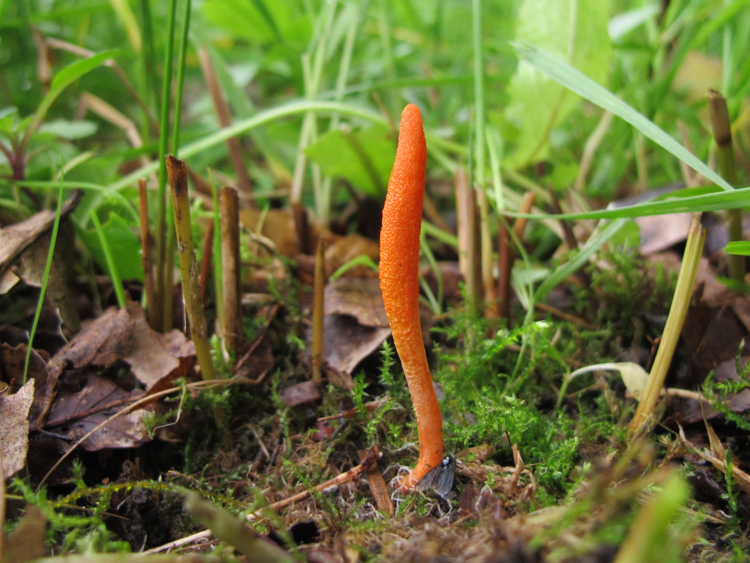
Scarlet caterpillarclub, (Cordyceps militaris). Photo: Marian and Bert
A notable increase
The stumps of felled trees are quickly colonized by saprotrophic mushrooms, such as Turkey Tail (Trametes versicolor), Smoky Polypore (Bjerkandera adusta), Yellow Crust (Trametes hirsuta), and Sulphur Tuft (Hypholoma fasciculare). Other saprotrophic fungi grow on leaf litter or humus, such as Shaggy Inkcap (Coprinus comatus) and Clouded Funnel (Clitocybe nebularis), which often appear late in the year.
Interestingly, the number of litter-decomposing fungi under campus hedges has risen sharply in recent years. This increase coincides with the use of bokashi fermented leaves collected from around the campus. Examples of these species include Verrucose Fieldcap (Melanoleuca verrucipes), Fringed Earthstar (Geastrum fimbriatum), and Bird's Nest Fungus (Cyathus olla).
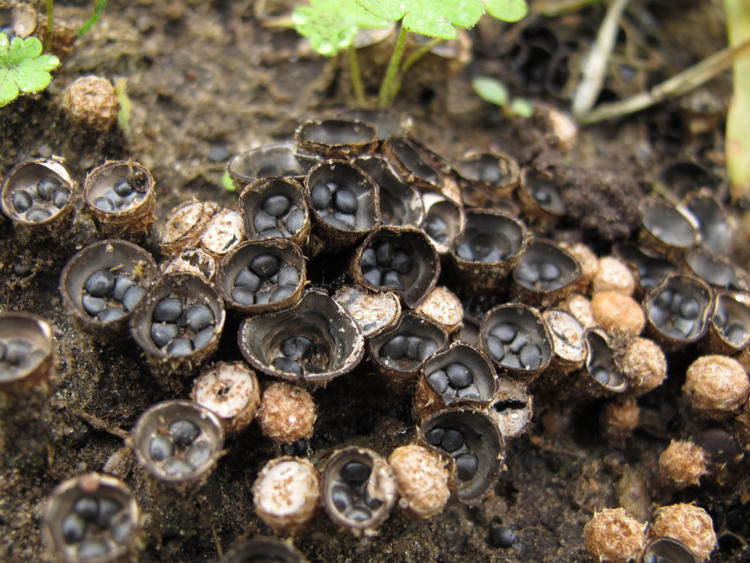
Bird's Nest Fungus (Cyathus olla). Photo: Marian and Bert
See for yourself
We encourage you to explore and enjoy the mushrooms on campus. Don’t be discouraged if you can’t identify them all—even our experts face the same challenge! The diversity of fungi is immense. Marian and Anna recommend starting with easily recognizable species and gradually building your knowledge. Have fun!
Biodiversity at UT
Strengthening biodiversity on our campus is one of our sustainability goals at the University of Twente. By improving monitoring, we gain knowledge about biodiversity on campus in general, which helps us decide on the best ways to support it. In 2024, we started the yearly Bioblitz, in which anyone can help monitor species via the app ObsIdentify. Several activities were organised to raise awareness of biodiversity (such as bird observation). A biodiversity council was established, where CFM (Campus & Facility Management) consult with biodiversity enthusiasts on how maintenance can contribute to an improved habitat for species. Furthermore, thanks to a Climate Centre grant, we are working on making data on green maintenance and biodiversity accessible for research and education.
Would you like to find out more about sustainability at UT? Please go to utwente.nl/sustainability.

